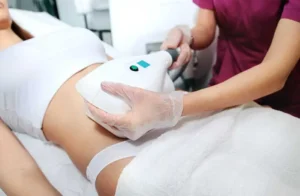First impressions matter, and self-expression is key; our hair plays a significant role in defining our identity. However, for millions around the globe, the struggle with hair loss is an ongoing battle that can impact confidence, self-esteem, and overall well-being. In recent years, non-surgical hair restoration methods, particularly those involving platelet-rich plasma (PRP), have emerged as promising alternatives to traditional treatments. In this exploration, we delve deep into non-surgical hair restoration techniques to unravel their effectiveness for individuals grappling with hair loss.
Understanding the Roots:
Alopecia, or hair loss, is a complex condition caused by many variables, including stress, lifestyle, hormone fluctuations, and heredity. Conventional remedies frequently entail intrusive techniques like hair transplants, which can be expensive and necessitate a large amount of recovery time. Non-surgical alternatives, however, offer a more accessible and minimally invasive approach to address the root causes of hair loss.
The Rise of Non-Surgical Hair Restoration:
Non-surgical hair restoration techniques have gained popularity due to their effectiveness and the reduced risk associated with them. One such method of making waves in the industry is platelet-rich plasma (PRP) therapy.
Platelet Rich Plasma (PRP): The Liquid Gold for Hair
A small sample of the patient’s blood is withdrawn and processed to concentrate the platelets, and then PRP is injected into the scalp as part of PRP therapy. Growth factors found in platelets stimulate hair follicles, encourage cell regeneration, and improve scalp health.
How does PRP work for hair restoration?
- Stimulation of Hair Follicles: The growth factors in PRP stimulate dormant hair follicles, encouraging them to enter an active growth phase.
- Improved Blood Circulation: PRP increases blood flow to the scalp, ensuring better nutrient and oxygen delivery to the hair follicles.
- Cell Regeneration: The concentrated platelets foster cell regeneration, aiding in the repair of damaged hair follicles.
- Reduction of I inflammation: PRP has anti-inflammatory properties that can counteract inflammation, a common factor in hair loss.
The Effectiveness of PRP: Unveiling the Science
The results of numerous research looking at PRP’s effectiveness in treating hair loss are encouraging in patients with androgenetic alopecia, a common form of genetic hair loss, platelet-rich plasma (PRP) dramatically increased hair density and thickness, according to a randomized controlled experiment published in the American Journal of Clinical Dermatology.
Furthermore, a thorough analysis published in the Journal of Cutaneous and Aesthetic Surgery emphasized the beneficial results of PRP therapy for a range of alopecia kinds, confirming that it can be an effective course of treatment.
Beyond PRP: Exploring Other Non-Surgical Techniques
While PRP stands out as a frontrunner in non-surgical hair restoration, several other innovative methods are gaining traction.
- Low-Level Laser Therapy (LLLT): In LLLT, light-emitting diodes or low-level lasers are used to stimulate and encourage the growth of hair follicles. Clinical trials have demonstrated the potential of this painless and non-invasive approach.
- Topical Treatments: Advancements in topical formulations, such as minoxidil and finasteride, provide non-surgical options for combating hair loss. These treatments promote blood flow and inhibit the hormone responsible for hair loss.
- Microneedling: Microneedling involves creating tiny punctures in the scalp with fine needles, stimulating collagen production, and enhancing the absorption of topical treatments. It’s a technique that has demonstrated positive results in promoting hair growth.
The Person l Touch: Customizing Non-Surgical Solutions
One of the strengths of non-surgical hair restoration methods is their adaptability to individual needs. Unlike one-size-fits-all surgical procedures, non-surgical techniques allow for a personalized approach, considering the type and cause of hair loss, overall health, and lifestyle.
Consultation and Assessment: The First Step
Individuals undergo a thorough consultation and assessment before embarking on a non-surgical hair restoration journey. This involves discussing medical history, a detailed examination of the scalp, and, in some cases, diagnostic tests to identify the specific causes of hair loss.
Tailored Treatment Plans
Based on the assessment, a customized treatment plan is decided. This plan may include PRP sessions, laser therapy, topical treatments, and lifestyle recommendations. The versatility of non-surgical methods allows for a holistic approach that addresses the root causes of hair loss.
Breaking the Myths: Dispelling Common Misconceptions
Myths and misconceptions about non-surgical hair restoration still exist despite its rising popularity. To choose these treatments wisely, one must be able to distinguish fact from fantasy.
Myth 1: Non-Surgical Methods Are Ineffective
Reality: Research and clinical studies consistently support the effectiveness of non-surgical methods, especially PRP therapy, in promoting hair growth and improving hair quality.
Myth 2: Results Are Instantaneous
Reality: Non-surgical hair restoration is a gradual process. At the same time, some individuals may notice improvements after a few sessions; full results often take several months to manifest. Patience is key.
Myth 3: Non-Surgical Methods Only Work for Certain Types of Hair Loss
Reality: Alopecia areata, telogen effluvium, and androgenetic alopecia are among the many forms of hair loss that can be treated with non-surgical techniques due to their versatility.
The Road Ahead: Integrating Non-Surgical Techniques into Hair Care Routines
As the landscape of hair restoration evolves, integrating non-surgical techniques into regular hair care routines is becoming a proactive approach to maintaining a healthy mane. Whether used preventatively or as a targeted solution for existing concerns, these methods offer a flexible and accessible means of promoting hair health.
Preventative Care
Non-surgical techniques are not exclusive to those experiencing hair loss. Many individuals choose to incorporate this method into their routines as a preventative measure, aiming to maintain and enhance the health of their hair before issues arise.
Post-Surgical Support
Even for those who have undergone surgical procedures, non-surgical methods like PRP therapy can serve as valuable complements. They may expedite the recovery process and optimize the results of surgical interventions.
Beyond Vanity: The Psychological Impact of Non-Surgical Hair Restoration
The significance of non-surgical hair restoration extends far beyond cosmetic concerns. It explores the emotional and psychological facets of people experiencing hair loss. Restoring hair has a transformational force that extends beyond appearance; it involves restoring self-assurance, confidence, and a good self-image.
Boosting Self-Esteem and Confidence
For many, hair loss can be a blow to self-esteem. Non-surgical solutions, especially those involving PRP therapy, promote physical hair growth and contribute to a renewed sense of self-confidence. The gradual improvement in hair density and quality often results in a positive shift in self-perception.
Takeaway: Rediscover Your Confidence, One Strand at a Time!
Are you set to say goodbye to thinning hair and hello to a lush, vibrant mane? Look no further than Amara Rejuve Medical Spa & Laser, where cutting-edge technology meets personalized care to bring you the ultimate solution in hair restoration. At Amara Rejuve, we understand that true beauty comes from within. That’s why we offer a holistic approach to hair restoration, combining PRP therapy with lifestyle recommendations to optimize your results. Call Now to Schedule Your Consultation and Embrace the Amara Rejuve Difference!








